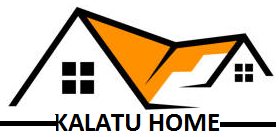The Benefits of Insulating Your Log Cabin for Year-Round Use – Tips on insulation to make your log cabin comfortable throughout all British seasons.
Log cabins offer a unique charm and connection to nature that traditional brick and mortar structures often lack. With their warm, rustic appearance, log cabins evoke a sense of peace and simplicity, making them a popular choice for holiday retreats, garden offices, or even primary residences. However, while these wooden structures are aesthetically pleasing, they require proper insulation to be comfortable throughout all British seasons. Insulating your log cabin effectively is crucial not only for comfort but also for energy efficiency and long-term durability. This guide will explore the benefits of insulating your log cabin and provide practical tips to help you make the most of your investment.
One of the primary reasons to insulate your log cabin is to maintain a comfortable indoor environment all year round. The weather in the UK can be unpredictable, with chilly winters, hot summers, and a fair share of rain in between. Without proper insulation, log cabins can quickly become uncomfortably cold in the winter and excessively hot in the summer. Insulation helps regulate the indoor temperature by reducing heat loss in the colder months and minimising heat gain during the warmer months. This creates a consistent and pleasant living space, regardless of the season.
In addition to comfort, insulating your log cabin can lead to significant energy savings. A well-insulated cabin requires less energy to heat in the winter and cool in the summer, leading to lower utility bills. In an era where energy costs are continually rising, and environmental concerns are increasingly at the forefront of public consciousness, investing in high-quality insulation is a wise decision. By reducing the need for artificial heating and cooling, you are not only cutting costs but also minimising your carbon footprint, contributing to a more sustainable future.
Effective insulation also enhances the structural integrity of your log cabin. The UK’s damp climate can be particularly challenging for wooden structures, as moisture can seep into the logs, causing them to rot over time. Proper insulation acts as a barrier against moisture, helping to prevent mould, mildew, and rot, which can significantly damage your cabin. It also reduces the likelihood of condensation, which can form on the inside of the cabin during colder months, further protecting the wood and extending the lifespan of your log cabin.
When it comes to insulating your log cabin, there are several areas to consider. First and foremost is the roof, which is one of the main sources of heat loss. Installing high-quality insulation in the roof is essential, as warm air naturally rises and escapes through the top of the structure. Materials such as mineral wool, fibreglass, or rigid foam boards are excellent options for roof insulation. They provide a strong thermal barrier while being resistant to moisture and fire, offering both safety and efficiency.
The walls of your log cabin are equally important to insulate. Log cabins, by their very nature, have a natural level of insulation due to the thickness of the logs. However, this may not be sufficient to withstand the British climate. Adding extra insulation to the interior walls, such as breathable membranes or insulated plasterboard, can significantly improve heat retention. This approach ensures that your cabin remains cosy in the winter and cool in the summer, creating a comfortable environment throughout the year.
Floor insulation is another critical aspect that is often overlooked. A significant amount of heat can be lost through the floor, especially if your log cabin is raised off the ground. Using materials like polystyrene boards or sheep’s wool beneath the floorboards can create a thermal barrier that prevents cold air from entering and warm air from escaping. In addition to keeping the cabin warmer, this form of insulation also adds a layer of soundproofing, which can be particularly beneficial if you are using your log cabin as a home office or studio.
Windows and doors are other potential weak points when it comes to insulation. Double or triple-glazed windows are a must for any log cabin intended for year-round use. These windows are designed to reduce heat loss and eliminate drafts, making them far more efficient than single-glazed options. Draught-proofing your doors and windows with weatherstrips or rubber seals is also a simple yet effective way to enhance insulation and prevent unwanted cold air from seeping in.
While insulating your log cabin requires an upfront investment, the long-term benefits far outweigh the initial costs. A well-insulated cabin provides comfort throughout the year, reduces energy bills, and protects the structural integrity of the building, ensuring that it remains a cosy and inviting space for years to come. Moreover, with the wide variety of insulation materials and techniques available, you can customise the insulation to suit your specific needs and budget.
To explore a range of high-quality log cabins designed for year-round use, consider visiting Simply Log Cabins. They offer a wide selection of log cabins tailored to suit various requirements, whether you are looking for a summerhouse, a garden office, or a permanent residence. With the right insulation, your log cabin can be transformed into a comfortable and energy-efficient retreat, no matter what the British weather brings.
Proper insulation is essential for ensuring that your log cabin remains comfortable, cost-effective, and durable throughout all British seasons. By carefully selecting the right materials and focusing on key areas such as the roof, walls, floor, and windows, you can create a space that is not only inviting but also energy-efficient. Investing in quality insulation is an investment in the longevity and enjoyment of your log cabin, making it a practical choice for those who value both comfort and sustainability.

